How to make a car shine like glass
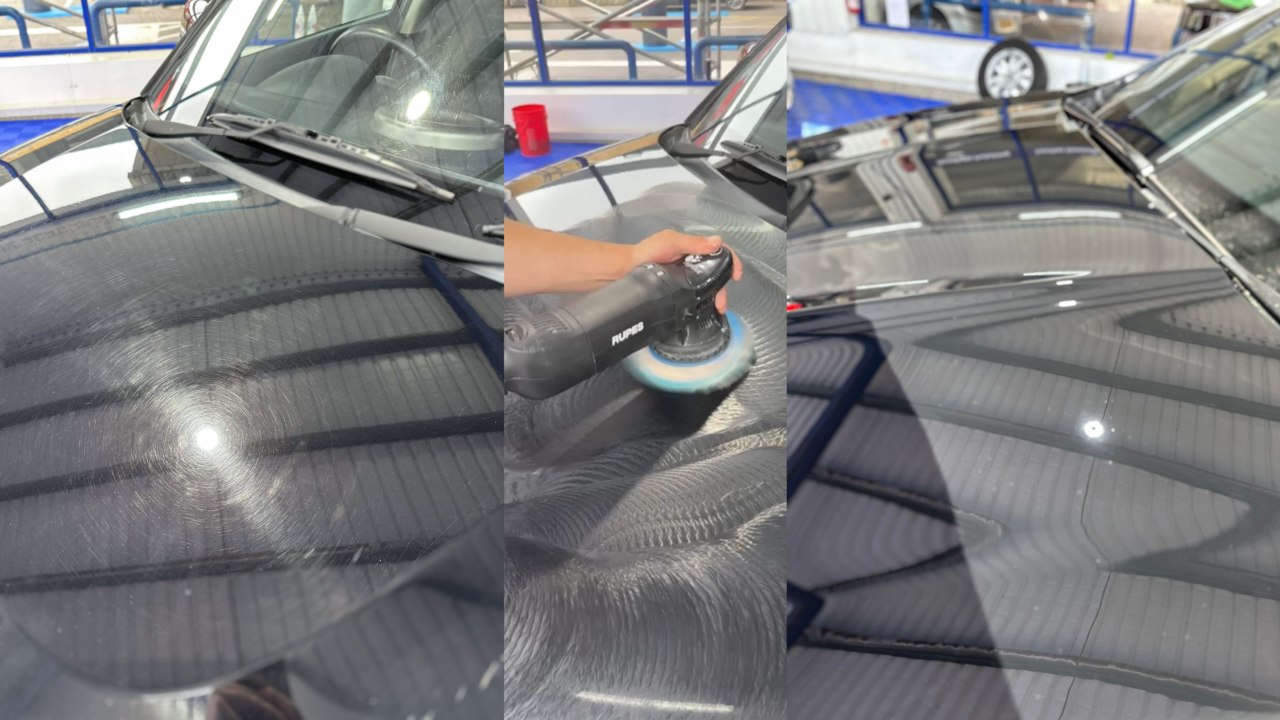
Ever wondered how you get a really shiny car? There are plenty of products on the market which promise a glossy wet look, but the real secret to a mirror finish is polishing.
The simple fact of the matter is that you can't make a silk purse out of pig's ear. If your paintwork is dull and faded, putting a wax or sealant over the top of it will do little to improve the appearance. Any product you put on your car can only enhance the painted finish.
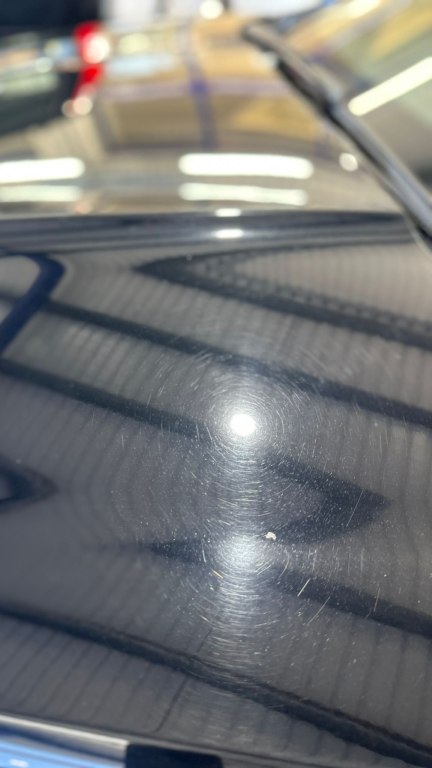
Why does my car look dull?
In all likelihood, the reason your car no longer looks as shiny as when you bought it, is that it is covered in micro-scratches. Your car will get covered in fine, sharp grit and dust, and in the process of washing your car, this gritty dust gets wiped over your car, causing tiny scratches until you have millions of them covering your paintwork. These are often called "wash marks" and you can see them clearly in strong light.
Your car may also have some oxidation, damage to the painted surface caused by sunlight reacting with oxygen in the air, which results in the very uppermost surface looking slightly hazy.
Many of the brand - name car care companies put a light polish in their wax products, which has enough cut to remove this oxidation, but will do little to remove the wash marks. Instead, their products may contain fillers and diffusers which attempt to hide these micro scratches by scattering light more evenly. This may be an improvement which helps to hide the scratches, but you won't get that mirror finish you are looking for.
How do I make my car shine again?
The answer is to machine polish out the scratches, which uses abrasive polishes and pads to remove the damaged uppermost layer of the paint.
This is something you can do yourself at home, and there are many enthusiasts who do just that, spending their weekends polishing cars. However, it isn't for everyone. It is a skill that needs to be learned, and practised in order to do it well. And of course, there is a considerable outlay for equipment, with the best equipment having a hefty price tag. If this is something you are interested in, we would recommend you start off on a good foot and pay for training from one of the detail supply companies.
Not that we would discourage anyone, but if you just want your car shiny again, all this works out far more expensive than just hiring a professional to polish your car for you. D.I.Y. doesn't make much sense these days, as it is possible to polish a car and put on a protective coating which will keep it shiny, so you don't have to polish it again.
Professional car polishing
This is a process where we aim to improve and enhance your car's paintwork by removing oxidation, wash marks, light scratches, stains, and other minor imperfections. We may also be able to remove etching from bird mess, and tree sap, firework damage, burns, and chemical stains.
The work is typically carried out by trained professionals using specialist equipment and products. The training is typically provided by the manufacturers or distributors of detailing supplies, who may provide a certificate or accreditation, as well as providing continued advice and support.
1. Types of Polishing
- Paint Enhancement: This is the most basic form of machine polishing and is ideal for new and nearly new cars with few problems. Several passes are made over the entire car using ever finer grades of buffing pads and compound, polishing away swirl marks and fine scratches. Within our range of services, we call this 'machine polishing'.
- Paint Correction: This typically involves dealing with a specific issue, such as etching from bird's mess or a moderately deep scratch. More aggressive polishes and compounds are used to get deeper in the paint to remove the surface damage, or we may use a technique called flat-and-polish. This may be provided as a stand-alone service to deal with a specific issue on an otherwise shiny car, or may be carried out before Paint Enhancement.
- The third option: For us, this is our six stage polish. If a car has numerous issues all over the car, it just isn't cost-effective for many cars to price each one as a separate Paint Correction. And, typically, cars with many areas of damage will not end with 'perfect' results anyway. The alternative is to make extra passes over the car, starting with more aggressive compounds. In this way, you get a large improvement over the entire car, which is affordable.
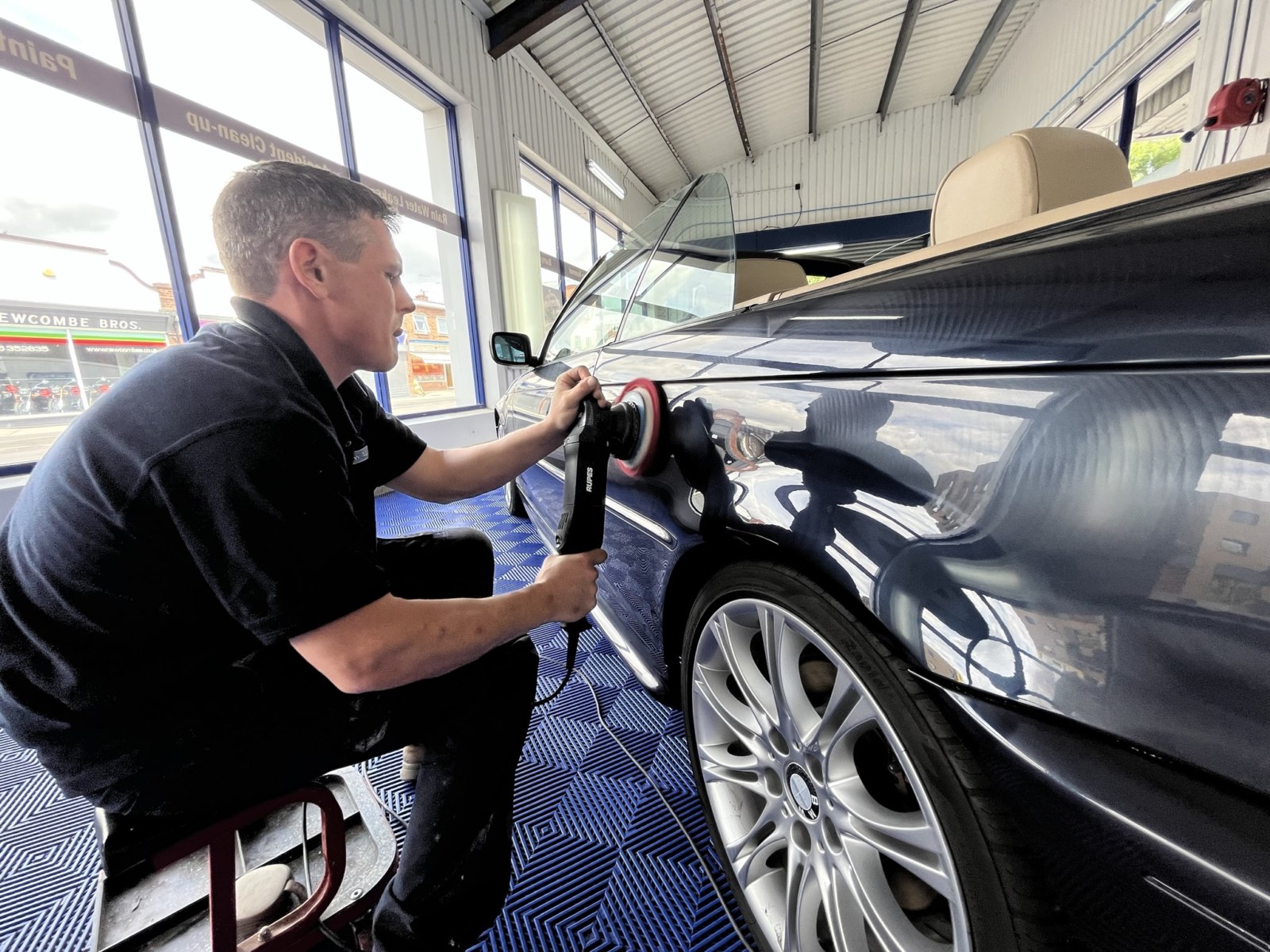
2. Process
- Initial Inspection: We usually carry out an initial inspection to identify what work will need to be carried out and make a judgement what Paintwork Correction is needed if any, and what level of Paint Enhancement is required. This way, an estimate can be provided to the customer, and they can decide if they wish to proceed and how far they want to go.
- Washing: The car is washed in detail and decontaminated so that traffic film and light industrial fallout is removed. If so much as a single grain of grit remains on the car and later finds its way onto a buffing pad, the results could be disastrous, so this needs to be done with meticulous care.
- Claying: The car is then washed with a clay bar, clay mitt and/or clay pads (which are rubber pads) to remove contaminants which are embedded in the surface of the paint.
- Inspection: It's at this stage we carry out a proper inspection to fully assess the car. Although we can do an initial inspection and get a general feel for a car, it is not until it is fully washed and decontaminated that we can really see all potential issues. Dirt and even car wax can potentially hide problems and need to be removed. Furthermore, the professional who is doing this inspection will have been the one who cleaned and decontaminated the car. This will have got them hands-on with the car, or to use a horrible American expression, 'up close and personal', so they will already be familiar with many of the issues.
- Paint correction: We will begin with remedial work to address any specific areas of damage. These will likely need to be dealt with using more aggressive polishes and compounds, but otherwise the process is the same as polishing the rest of the vehicle, only with a couple more stages. The paint correction may actually begin with wet-sanding, using a fine sandpaper to cut deeper into the paint.
- Polishing - Cut: The polishing process begins with a compound that has 'cut', in other words, it's abrasive. The damage to the paintwork on the vehicle which makes it dull is on the uppermost surface of the clear-coat, so this is removed by cutting through to fresh clear-coat underneath. This is done with a combination of coarser buffing pads and coarser polishing compound. The extent of the damage on the clearcoat will dictate how far back the clear coat needs to be cut, and how aggressive the polish/pad combination needs to be. Deeper scratches will require a coarser compound, alternatively, the same effect can be achieved by using a medium compound for longer, but time is money.
- Polishing -buff: All polishes are abrasive and can be thought of like very fine liquid sandpaper, as a result, they themselves leave tiny micro scratches. These can be seen and although finer than the wash marks you are trying to remove, are equally visible under harsh light. So after the cut, the aim is to buff the surface of the paintwork smooth with ever finer polishes.
- Finishing polish: After the paintwork is polished, so it looks perfect, and no polishing marks are visible, the panels are wiped down with a solvent. This is because polishes contain oils for lubrication and those oils can fill micro-scratches, hiding buffer trails. We can then complete the work with a finishing polish, which is designed to give the best possible mirror finish.
- Final inspection: With all this done, the work is checked. We will be polishing under harsh inspection lights which betray any imperfection, and although the lights are moved around, and we view the car from different angles, if weather permits, we will move the car several times so that we can view it in natural sunlight.
- Protection: At this stage, the car will be astonishingly shiny, however the paintwork doesn't have any protection. At bare minimum, it will need a coat of wax, although we recommend a ceramic coating. A protective coating will help keep the paintwork in its current condition. If the car is properly protected and well maintained, it shouldn't need polishing again for many years, and even then, not to the same degree.
The choice of protection will also add to the finished effect, giving it warmth and depth, it may also enhance the metallic fleck and give that wet look shine we are looking for.
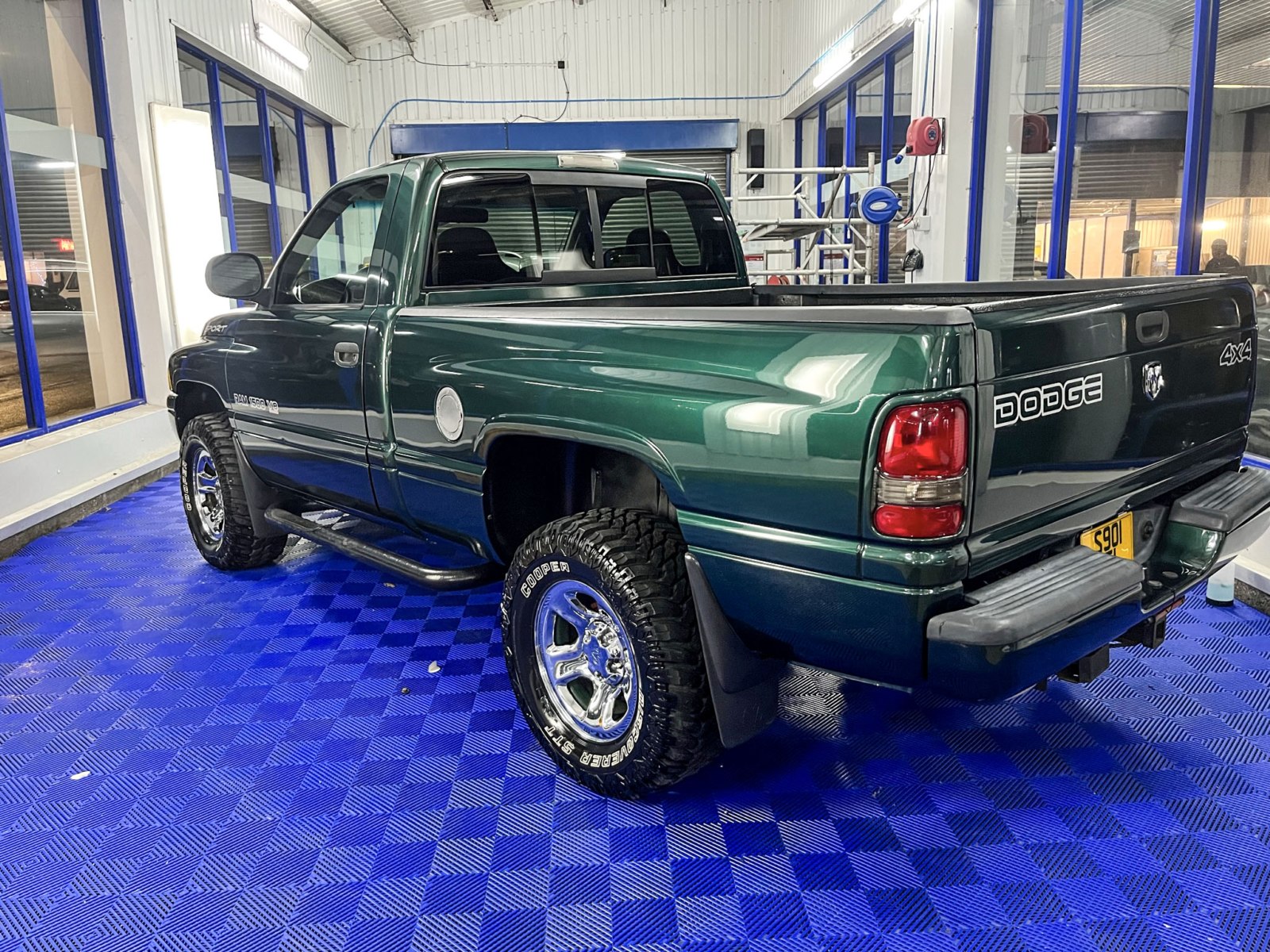
Is polished perfection attainable?
The closest I have ever seen to perfection was a Sunbeam Alpine with sixteen coats of lacquer, but that was after a full restoration which took several years to finish, after which there was only one blemish, so it wasn't perfect.
I think anyone who works on cars will tell you that they aren't perfect when they come out of the factory, and less likely so when they have been loaded on ships and trains and travelled halfway around the world, then washed with a dirty sponge in the yard of a dealership by somebody on minimum wage.
It is a dangerous idea to chase perfection -- the Pareto Principle applies, as does the law of diminishing returns. Amazing results can be achieved with a few hours work, which makes car polishing affordable. However, you could easily spend weeks trying to create a true mirror finish free from any blemish.
This is worth mentioning because some of those enthusiasts we mentioned further up the page do exactly that. Sometimes there is an expectation that professionals could do better, and perhaps we could, but very few people are prepared to pay the cost of us spending the time.
How much does it cost?
It really depends on the condition of the paintwork when we begin. We polish brand-new cars straight from the showroom because they have never been polished. The self-levelling paint applied to them at the factory is shiny, but not as shiny as it can be with a couple of off passes with a machine polisher. Obviously, polishing a brand-new car is easier and quicker than a car which has been through the car wash once a fortnight for 15 years and has picked up lots of blemishes.
We can make a fairly rough car shine again, but it takes more work and more expense; however, some cars are worth it, especially if it's a prestige or sports car.
The best bang for your buck is to buy a ceramic coating. Although sometimes priced separately, you are quite likely to be buying a package deal where you get your car polished and then a coating applied to keep it shiny for many years.
Is there a risk?
Yes, there is a risk.
Perhaps the biggest risk is that you pay to have your car polished, and it looks great when you pick it up, but over the next few days it begins to look awful! We actually see this a lot, especially on cars that have some bodywork. They have a wing resprayed which is shiny and new, and the rest of the car looks dull in contrast. So the bodyshop gives it a quick polish with a machine to make the rest of the car match. However, the products they use hide swirl marks and when those products wash or burn off, you get buffer trails and holograms. It's not the end of the world, but it means you have wasted your money.
As with most things, you get what you pay for. Polishing a car does take time and skill, so don't cheap-out.
There is also a chance you can burn the paint because it gets too hot, you can buff through the paint if you are too aggressive with the compounds, or that the buffer catches or bashes some trim, breaking it or pulling it off.
I won't lie, it does happen, in fact, we buff through paintwork once or twice a year. Oh shock, horror!
There's actually a good reason that we do. We work very closely with a body shop which can repaint cars. Occasionally, we see a scratch or blemish which will probably require repair-and-repaint to deal with properly, but it can be hard to tell. The scratch might be so deep in the paintwork that it would be incredibly risky to try to polish that deep into the paintwork. But if the customer has decided they want it gone and so will have it repainted anyway, there is zero risk in giving it a go. Sometimes we get lucky, and it polishes out, in which case they save a lot of money. Sometimes it doesn't work out, in which case it goes off to the paint shop. Nothing ventured, nothing gained.
For the record, the paint shop we use are specialist in restoring vintage cars, and when they polish a car, they do it properly.
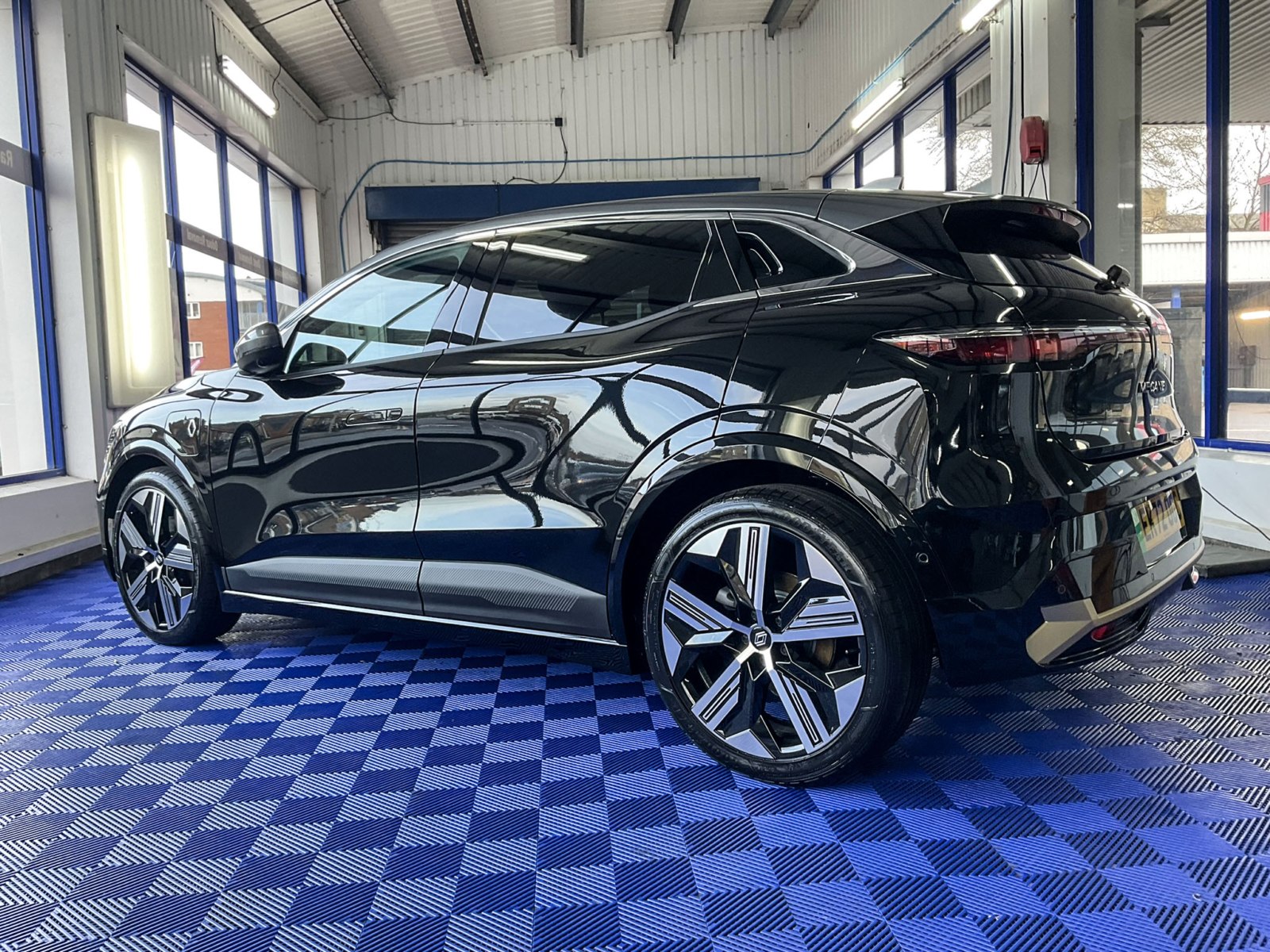
How do I find a professional to polish my car?
There are plenty of professionals out there who can polish your car for you, whether they call themselves valeters or detailers. Most of them are adequately skilled to do the job, but as well we know, there are probably going to be a few who aren't.
As there is a certain risk to polishing a car, you should ensure they are insured and have had training, or at least are very experienced. Your first port of call could be an association, such as the International Detailer's Association or the UK's Professional Valeters & Detailers Trade Association.
You can also look for reviews on Google or Trustpilot, and it is also handy if they have photos and/or video of examples of their work.
Maintaining a glossy wet look finish
Once your car is polished and looks like new, you will want to keep it that way. We will want to achieve the following:
- Prevent washing marks
- Prevent oxidation
- Provide a protective coating
There are two approaches to this. The old way and the new way.
The old way is to coat your car in a good quality wax, and maintain this coating by topping it up. A good quality wax lasts about 6--12 months, but to be sure you have a nice thick coating, we would recommend waxing your car 2–3 times a year, an extra coat being applied in the summer because the sun can burn away wax. This coating of wax will provide some protection from micro scratches because it will help to prevent dirt sticking to it, so it is easier to wash. The easier the dirt washes off, the less chance you have of wash marks. A coating of wax will also fully prevent oxidation as it acts as a sacrificial barrier.
The new way is to have a ceramic or graphene coating. While nothing will completely eliminate the chance of getting wash marks, ceramic coating are tough and far more resistant to scratching than your paintwork. Perhaps more importantly, they are so slick and hydrophobic, that dirt doesn't stick to them. It has to be seen to be believed, but your car just doesn't get nearly as dirty and won't need washing nearly as often. The less you wash your car, the less chance you have of picking up wash marks. Additionally, they are chemically inert and so resist oxidation and staining from chemicals and organic contaminants such as birds mess or decaying leaves.
Touchless washing
It's all the rage with enthusiasts because they know if they don't touch their car when they wash it, then they will get less wash marks. Touchless automated car washes are becoming more common, and if you can find one near you, we would recommend you use it.
You can also do it yourself, at home, if you have a pressure washer. You rinse off the car with the pressure washer to get off the worst of the dirt, and to wet the car.
Next, you cover the car in a snow foam, which soaks any dirt and grime. This is often done using an attachment to your pressure washer. Then you wash it off. The process works a little like a dishwasher would.
Then, when your car is clean, instead of drying it with a towel, you use an air blower. Something like a leaf blower, so that once again, you are not actually touching the car, minimizing the risk of scratching.
The drawback of this is that you do need a pressure washer (which means access to a hosepipe and power supply), and you will need the extra attachment for applying the soap, plus the special soap, plus the air drier. And so there is a cost to the method, which isn't perfect.
As we always maintain, there is no cleaning without agitation, but it is agitation which causes the dirt to scratch. In the case of touchless washing, agitation is provided by high-pressure water. So it will still cause friction of the grit on your paintwork, but it is minimized.
There are other ways to wash a car without all the extra equipment, that also minimize wash marks. Using a microfibre wash mitt is better than using a sponge. Some people swear by using brushes rather than a wash mitt. Ensuring your car is spotlessly clean before drying it is essential, and using a very fluffy soft microfibre towel will also help.
Why would you want a shiny car?
As somebody recently said on Twitter, "Everybody should have a car that you want to take photos of all the time".
Everybody should have a car that you want to take photos of all the time 😂 pic.twitter.com/55YuIAhxjE
— Ted with TM (Transverse Myelitis) (@feckingpsycho) February 9, 2024
We couldn't agree more! If you have a car you love and take pride in, you would absolutely want it looking its best. Keeping the paintwork well polished and clean will help enhance the colour and make it sparkle.
What you choose to drive and how you maintain your car will influence how others perceive you. And even if nobody is really paying attention and doesn't appreciate your car the way you do, then at least a shiny car will make you feel good.
But there are practical reasons too. A highly polished car will stay cleaner for longer, and be easier to clean, especially with a modern ceramic coating. This means you spend less time washing, more time driving a clean car and when it comes to sell, you will have a higher resale value.
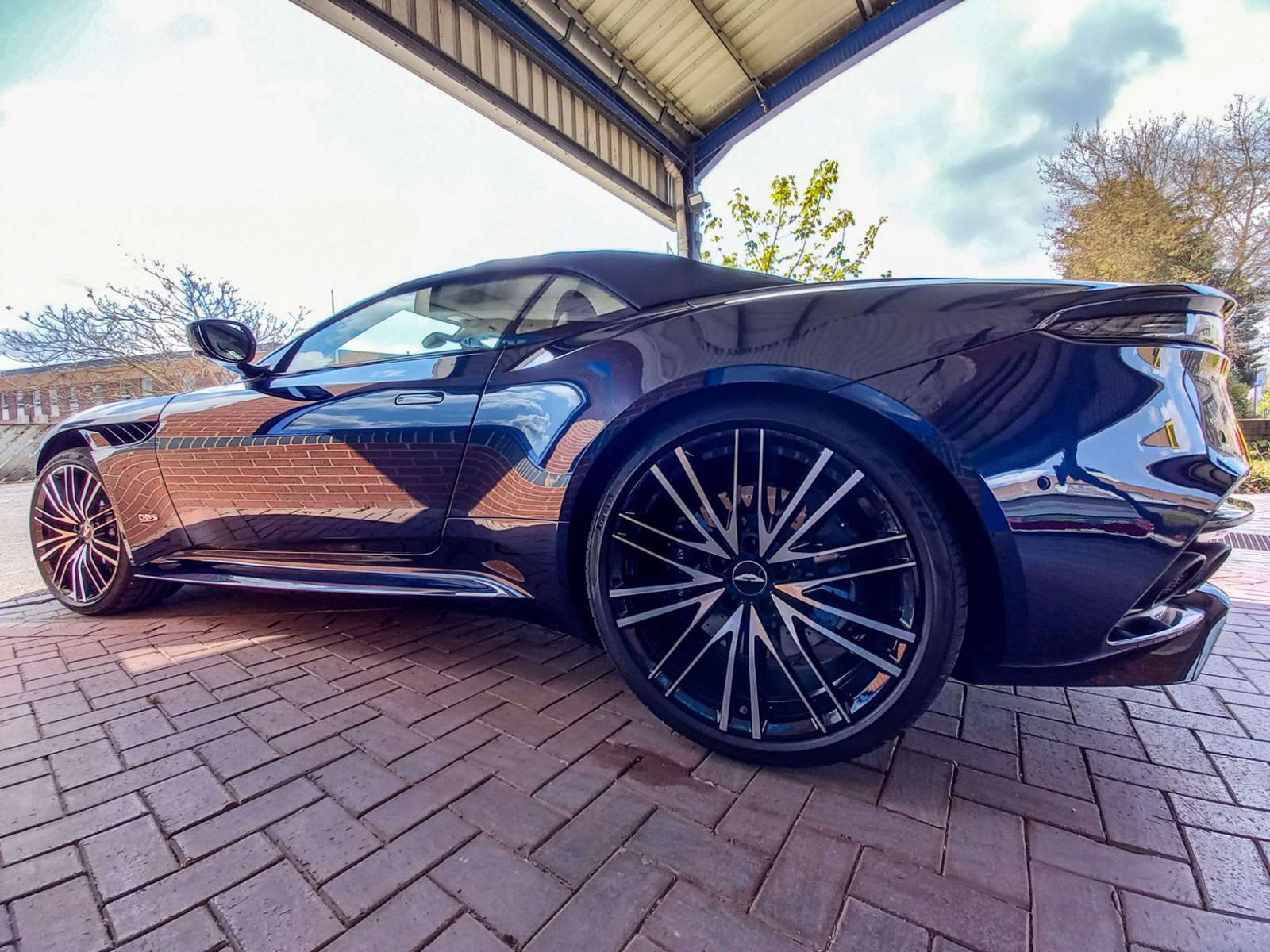
Related Blogs
Here are some more of our latest #ModernCarRestoration blogs
Wet Sanding
Wet Sanding is the method we use to remove light scratches and blemishes, evening out the paint so it can then be machine polished.
Read ArticleRolls-Royce Modern Car Restoration 2008
As our fame spread to the four corners of the globe, this car came to us all the way from Majorca for our modern car restoration services.
Read ArticleHow much does it cost to polish a car?
If you are thinking of having your car professionally machine polished in the UK, you might be confused about the pricing.
Read ArticlePorsche Detailing / Restoration 2005-2019
This Porsche Carrera came to us for Modern Car Restoration, it had some rust on the rear end and required some quite serious bodywork. But that's not what's interesting about this Porsche!
Read ArticleAston-Martin Vantage Modern Car Restoration
A behind the scenes look at the kind of work we do at New Again in Modern Car Restoration. This car has been sitting in storage for five years and is in need of some attention.
Read ArticleA word of caution about wear
It's true that New Again can repair all kinds of minor damage and wear, putting it right and making a car look much fresher and newer. But did you ever stop to think what the wear on a car tells you?
Read Article
Can We Help You?
"We can offer specialist advice on the best car service to suit your requirements"
When bringing your car to New Again, we often ask you to explain exactly the reason for having your car Protected, Valeted or Repaired. Once we understand exactly what it is you are trying to achieve, we will appraise your vehicle using our detailed appraisal check-sheet allowing us to identify areas of concern and tailor specific services that match your requirements and budget.
If you are not sure what service you need and would like to speak to one of our technicians, simply request a callback by filling in the form on our contact page.

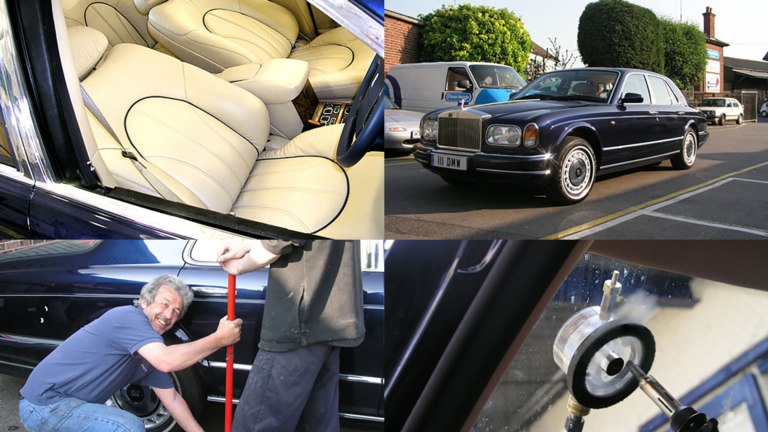
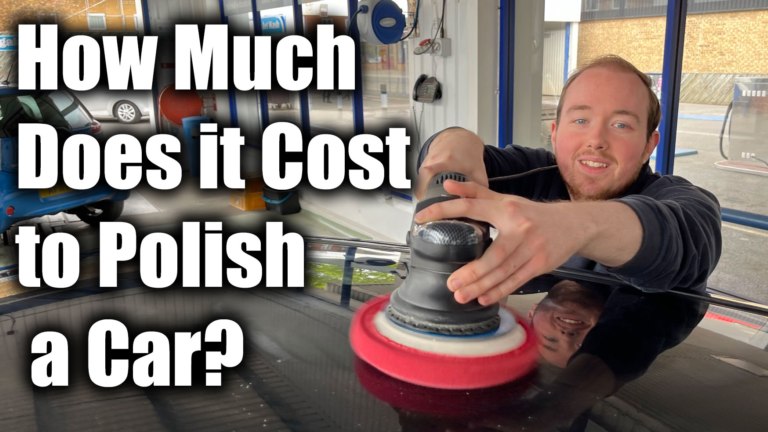

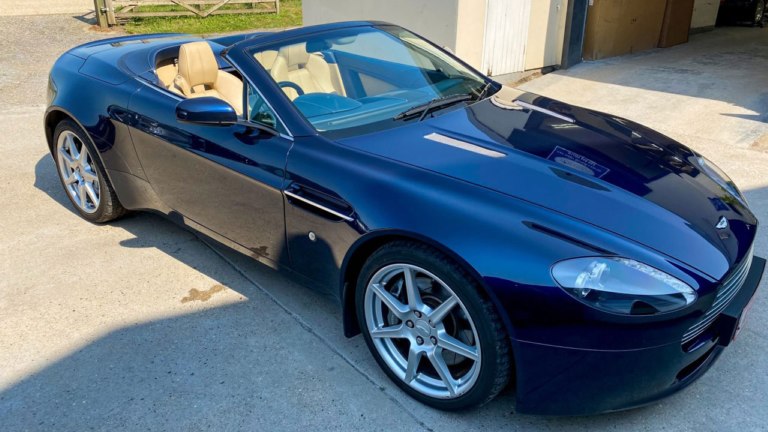
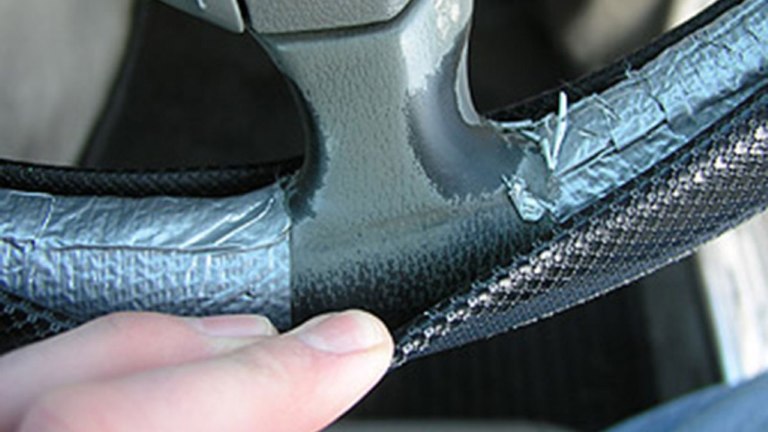
Share this blog